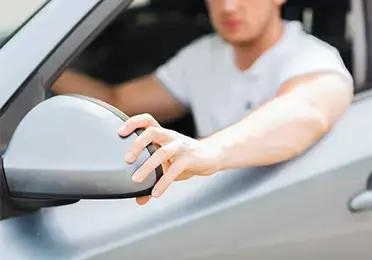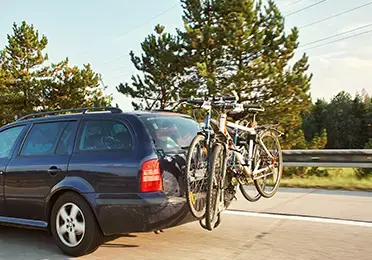How does the right-of-way system work in a roundabout? What are the rules for entering and exiting a roundabout? How do you properly change lanes within a roundabout? These are just some of the questions that traffic participants face, and we’ll do our best to answer them to eliminate confusion for drivers.

Who has the right of way in a roundabout?
You need to yield to vehicles already moving within the roundabout until you find an opportunity to merge. As a reminder, there are traffic signs labeled “Intersection with Priority Road“ at the entrances of most roundabouts in Serbia. These signs are easily recognizable by their inverted triangle shape. In the absence of these signs, the standard right-of-way rule applies, just like at any other intersection. This means that the vehicle coming from your right has priority and therefore has the right of way over vehicles already inside the roundabout.
The only exception to this right-of-way rule occurs when traffic is regulated by a traffic officer. In such cases, follow the officer’s instructions regarding the order of merging. Additionally, it’s crucial to recognize the direction in which vehicles are moving within the roundabout. For this reason, at the entrances of roundabouts, you will also find signs with three white arrows pointing counterclockwise, indicating the permitted direction of travel within the roundabout.
How to enter a roundabout?
The moment of entering traffic in a roundabout involves choosing the appropriate lane, which depends on factors such as the number of lanes in the roundabout, the lanes in the street from which you’re entering, and the lanes in the street where you’ll exit the roundabout. Selecting the right lane for entering the roundabout is related to the exit you plan to take:
- If you’re exiting at the first exit, enter the roundabout using the right lane and follow the outer lane of the roundabout until your exit.
- If you’re exiting at a later exit, enter the roundabout using the left lane and follow the inner lane of the roundabout until it’s time to change lanes.
How to change lanes in a roundabout?
If a driver in the inner lane of the roundabout wants to exit, they should not cut off a vehicle in the outer lane. Instead, they should yield and then, similar to changing lanes on a straight road with two lanes, activate their right turn signal (if safe) to move into the outer circular lane.
Pay special attention to signaling when changing lanes within the roundabout or exiting it. Use your turn signal when changing lanes or exiting the roundabout. However, do not use the turn signal when entering the roundabout, as the direction of travel is already clear. Remember to drive safely and give other drivers enough time to react.
What if changing lanes is not possible at the moment?
If the outer lane is so busy that you can’t switch lanes when you want to, there are two ways to handle this situation:
- Stop with your right turn signal on and wait for a suitable moment to change lanes.
- Make another loop around and then seize the opportunity to change lanes (making loops within the roundabout is not against traffic rules, but it’s not recommended due to overloading the roundabout).
If the traffic in the outer lane is so heavy that you don’t see a nearby chance to change lanes, and there are many vehicles following you in your inner lane, it’s probably wiser to make another loop and catch a more favorable opportunity for lane change. Otherwise, if there’s no congestion in your inner lane and an opportunity to change lanes into the outer lane is visible, wait for the right moment and take advantage of it. Remember, one more thing during roundabout driving: trams always have the right of way.
How to exit a roundabout?
Having waited for the right moment (you yielded to traffic in the roundabout) to enter the roundabout and having chosen the right lane to do so (you also switched lanes within the roundabout - if needed ) all there’s left for you to do is leave the roundabout, with the use of a turn signal, via your exit and yield to, not only trams, but also pedestrians and cyclists, who are crossing your exit street.

TotalEnergies Service Network

13 things drivers usually do wrong

How to adjust the driver’s seat and the mirrors
